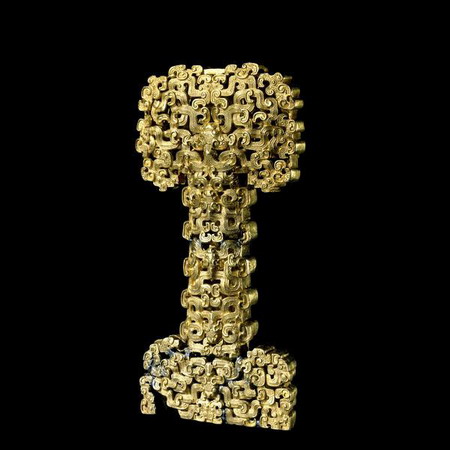Repurchasing, a bone in the throat
Repurchasing remains the mainstream in relics retrieving, other than donating or demanding.
|

This undated photo of gold dagger handle, dated back to the Eastern Zhou period (771-221 BC), is among the 23,000 pieces of Chinese culture relics kept in the British Museum. In the Eastern Zhou period, gold began to be increasingly used on a larger scale, though goldworking still relied to a great extent on well-established bronze technology, with ornaments and other items cast using moulds.
|
The donation of relics is largely left in vain due to its heavy reliance on the holder's consciousness and ethical principles.
Demanding the return of relics sounds reasonable according to an international treaty that mandates relics plundered during the colonial wars be returned to their homeland. However, the treaty fails to impose any practical restriction on non-member states like Britain and America who actually hold large mounts of Chinese relics taken during wars.
Despite the Chinese government's strong resistance to buying back national treasures, repurchasing by unofficial Chinese parties remains the norm; while undeniably a bone in the throat, especially when the victim actually bears the burden. Non-governmental buyers mainly consist of social groups and institutions as well as a few wealthy individuals.
According to the International Herald Tribune's report, the mainland special fund was still under intense negotiations with Christie's, trying to stop the Rat and Hare bronze statues from entering the auction markets and get them back under a reasonable price.
"We do respect the business rules of auction companies as well as the operating mechanism of arts markets. But it's definitely unacceptable to put plunder under the hammer." Mr Zong said.
"The price is the major issue. We need a reasonable price right now."
So far, five of the 12 animal bronzes have returned to China. The Rat and Hare will probably be the last two appearing on the market. The remaining five, Dragon, Snake, Sheep, Cock and Dog, may have been destroyed in warfare or lost forever, experts suspect.

